
Station wagons were often used as staff cars. Their use in North Africa was fairly common.
Canada made several versions. Often the question is asked, “How many were built?” I do not know.
Of the 857,970 military military vehicles built by Canada during World war II (1939-1945), just under 10% were “Station Wagons, Staff Cars and Miscellaneous 4 x 2s.” They comprised 9.55% of Canadian production. 81,942 of all of these types and makes were made.
The 7 passenger model was built on a car chassis and used 6.00×16 tires. These tended to have a roof rack.
The 5 passenger C11ADF was built with right hand drive on a truck chassis and used 9.00×13 tires.
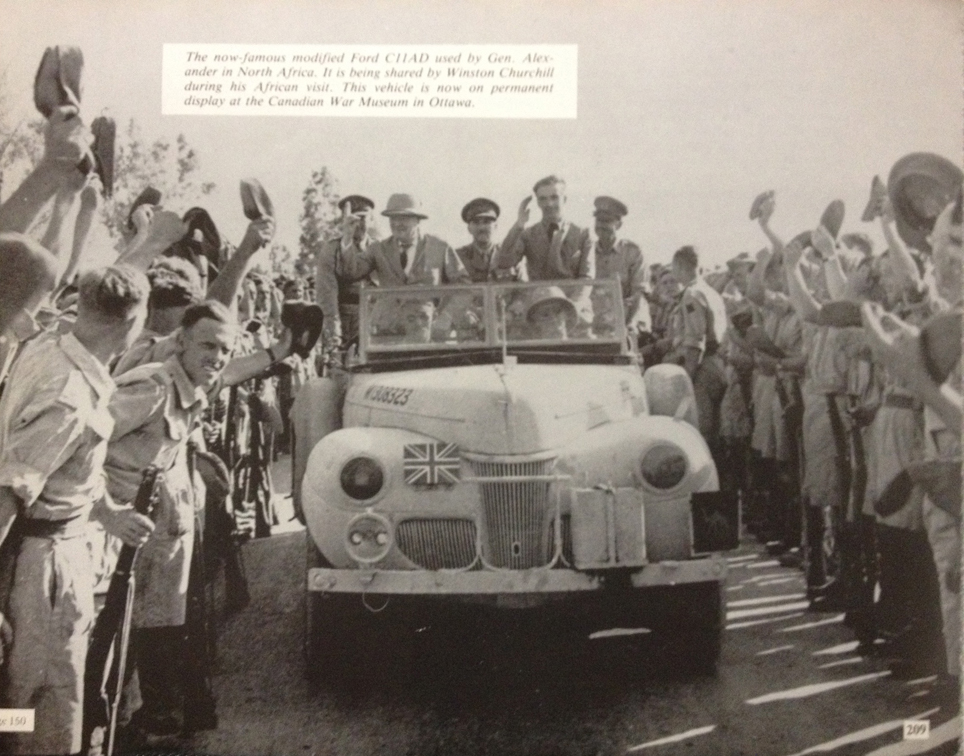
M1308323 (NOT M1307323 as painted now at CWM) – Field Marshall Alexander’s staff car. The late Dr. Bill Gregg told me that the person who painted the markings in Canada for the museum had translated the Arabic licence plate number instead of looking at historic photos.

The most famous C11ADF still survives. It is Field Marshall Alexander’s staff car. It is presently on display in Vimy House of the Canadian War Museum in Ottawa. In North Africa, it was converted to a convertible, and the doors were sealed shut (I presume to give the body some strength as the pillars and roof were gone). I do not think it was armoured as the Canadian War Museum’s web site was saying.
The car was restored by the Canadian Army for the CWM back in the 1960s (?). A photograph of tradesmen clambering over it showed up in an old SENTINEL magazine. That photo and the CWM photos show the brass plaque detailing its history.
The CWM’s 1967 Guidebook p. 31 said “Alexander’s Car – This standard military car was modified for General Alexander in Cairo Army workshops in 1941 when he took command of the 8th Army. It accompanied him from Egypt to Tunis and through the Italian Campaign. It was driven 180,000 miles, had four engine changes, and numberless overhauls. The tires appear to be German and the windscreen Italian.” [I suspect that the tires are Canadian 9.00×13 desert tread tires, not German. If someone can verify this it would be appreciated. ]
According to Dr. Bill Gregg (I believe this is where I heard it), Alexander brought the vehicle to Canada when he was Governor General of Canada after WWII. It was too cold for the harsh Canadian winters so he apparently traded it to Ford Motor Company for a modern enclosed car. Ford later gave it to the Canadian War Museum.
Dr. Gregg told me about 1985 that he had located the war time driver of this vehicle as Alexander kept the same driver throughout North Africa, Sicily and Italy, and Canada. Details that emerged were that the weapons clips on the side upper sills have disappeared at some point. Bill told me that the CWM refused to bother to go to interview this man who drove their most historic vehicle through so many campaigns and miles. Bill also told me that the number on it now is incorrect. The correct WD number is M1308323 (M= Motorcar) although at least one WWII photo shows it as L1308323 (Same number but with an incorrect L for Lorry code letter instead of M for some unknown reason!). The number was repeated in Arabic on the Egyptian licence plate. Bill’s story is that when the CWM had the vehicle repainted, the painter was Arabic. He did not write down the number on the hood, but simply translated it from the licence plate – which appears to have had an incorrect number in the Arabic version! It now reads 1307323 instead of M1308323. Although the CWM has been told of this error years ago, they have not corrected it yet as far as I know.
When CWM described this car on their web site in the late 1990s, they had several; errors. One was that they claimed the doors were sealed to make it more impregnable. I do not believe this. They also did not mention that it was MADE IN CANADA, simply saying that it was made in North America.
One of the two flag staffs has now been stolen at CWM.
SURVIVORS
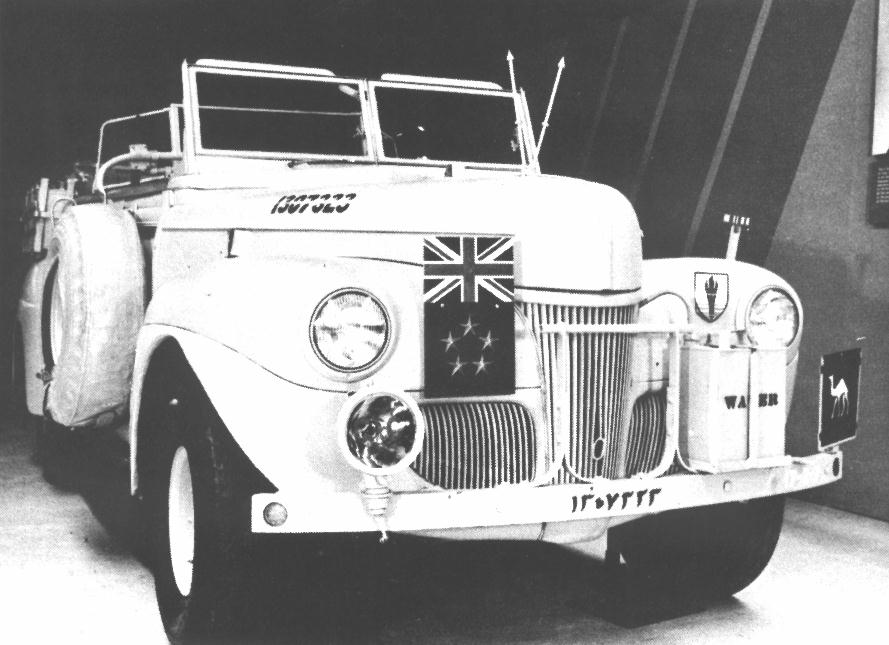
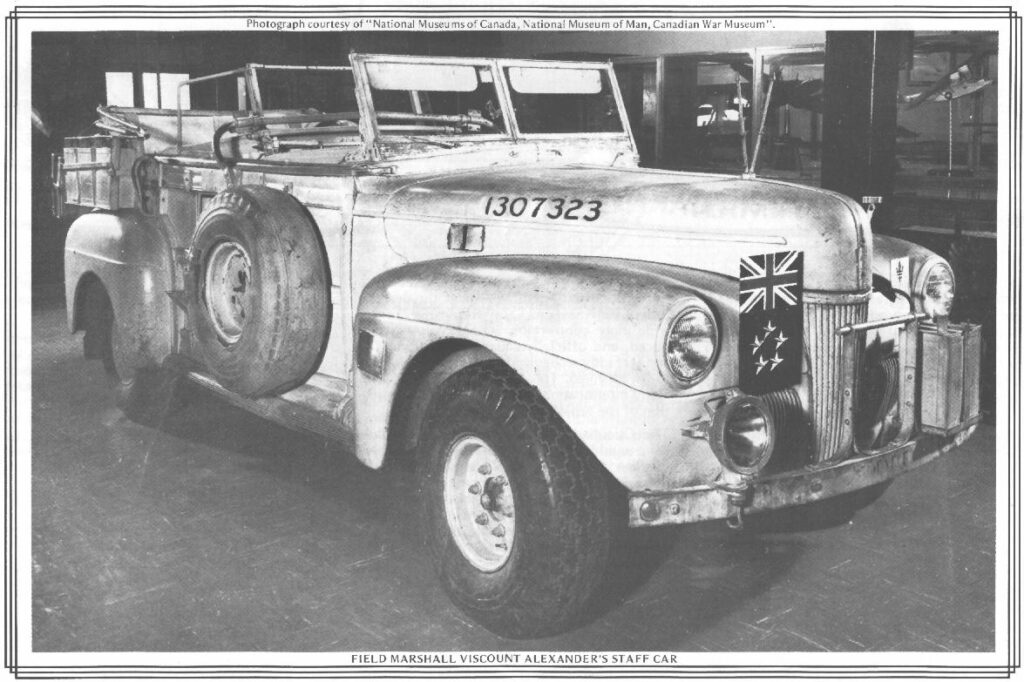

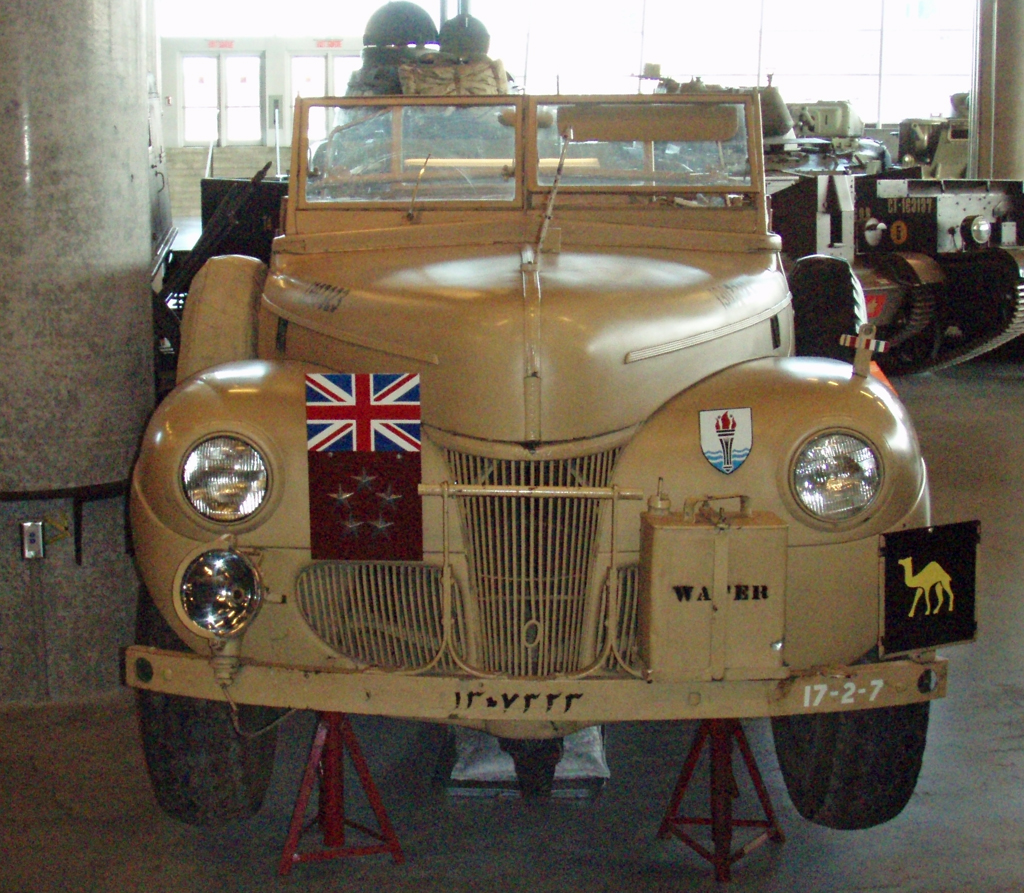
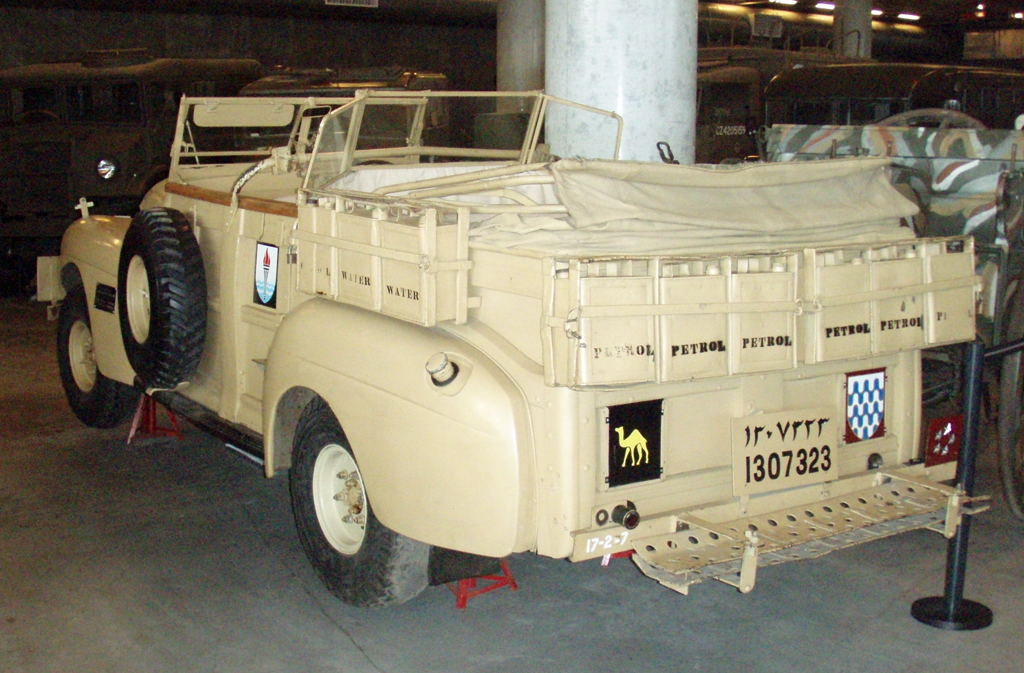
Field Marshall Alexander’s staff car – a cut down C11ADF, but certainly the most historic survivor. – Canadian War Museum, Ottawa, Ontario, CANADA.
RESEARCH QUESTIONS
From Hanno Spoelstra in the Netherlands.
“2002 AUGUST (on Maple Leaf Up Forum — Thank you very much for your Station Wagons page. It does help clearing up some points. However, I wonder if there was a difference between chassis types: as far as I can ascertain the Station Wagons with 9.00-13” tyres only had heavier axles (same as F8?), not a heavier (truck) chassis.
This is what I have found out about Ford model identification:
C: Canadian production
11A: 1941 model, 90 hp, 114″ wheelbase Passenger chassis
29A: 1942 model, 100 hp Mercury engine, 118″ wheelbase Passenger chassis
But what about the “D”, “S” and “F” – do they denote special equipment? Am I right “D” stands for the ‘ruggedized’ version with 9.00-13″ tyres and heavier axles? If so, “S” might stand for standard tyre size (6.00-16″).
No doubt this list can be corrected and/or extended! Can anyone please help?
Regards,
Hanno
He then wrote:
I’ve been able to refine the technical specifications a bit:
Known Ford Station Wagon models:
– C11AD
– C11ADF
– C11AS
– C29ADF
in which:
C = Canadian design
1st digit = model year; 1 = 1941 model, 2 = 1942 model
2nd digit = engine type; ‘1’ indicates the 85-hp engine, ‘9’ the 95-hp engine
A = 4×2 car chassis with 114″ (1941) or 118″ wheelbase (1942)
D = unknown
F = right-hand drive
S = unknown
Pictures of the C11ADF show it with 9.00-13″ tyres. Vanderveen notes the C11ADF has a “full-floating truck-type rear axle with open propeller shaft and semi-epileptic springs (as Ford C011DF – F8)”. My guess is the “D” denotes the 13″ tyre + F8 rear axle combo.
The “S” probably denotes Standard, as in fitted with 6.00-16″ tyres. What did the standard 1941-42 car axle setup look like? Transverse leaf spring with propeller shaft running down a torque tube?
I guess both types had a front axle with transverse leaf spring, common on Fords of that era.
Re. the F stands for right-hand drive: this would mean the C11AD and C11AS were left-hand drive Wagons similar to their US counterparts, supplied for domestic use.